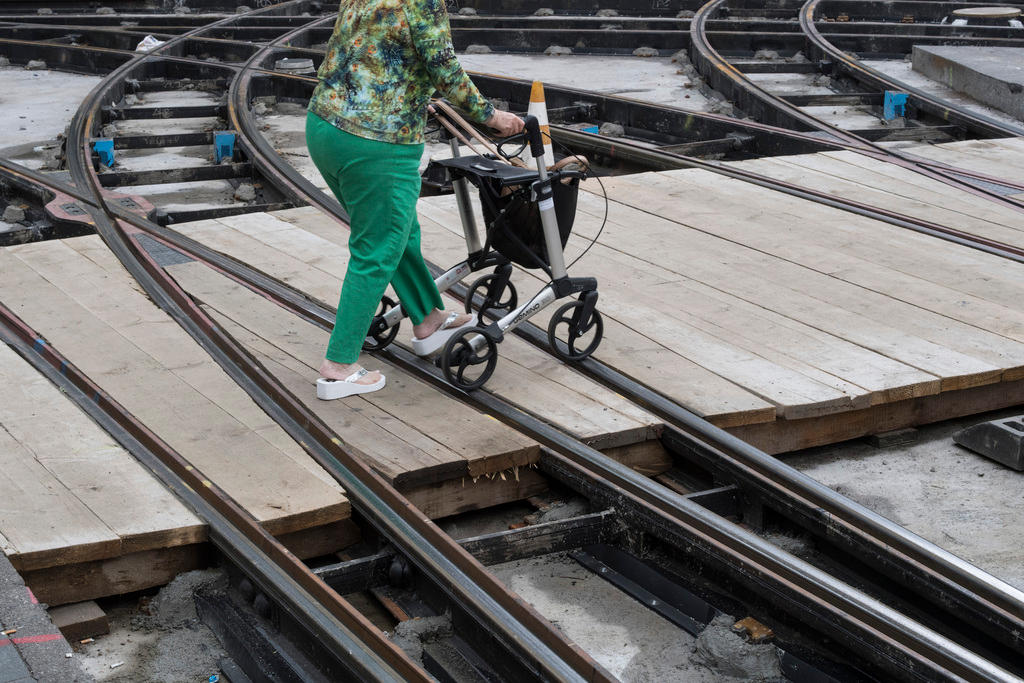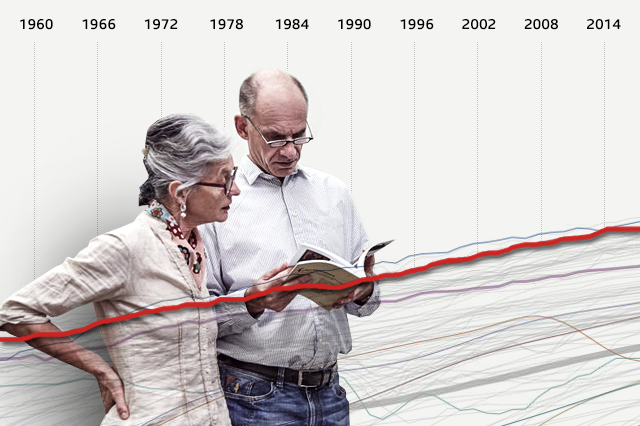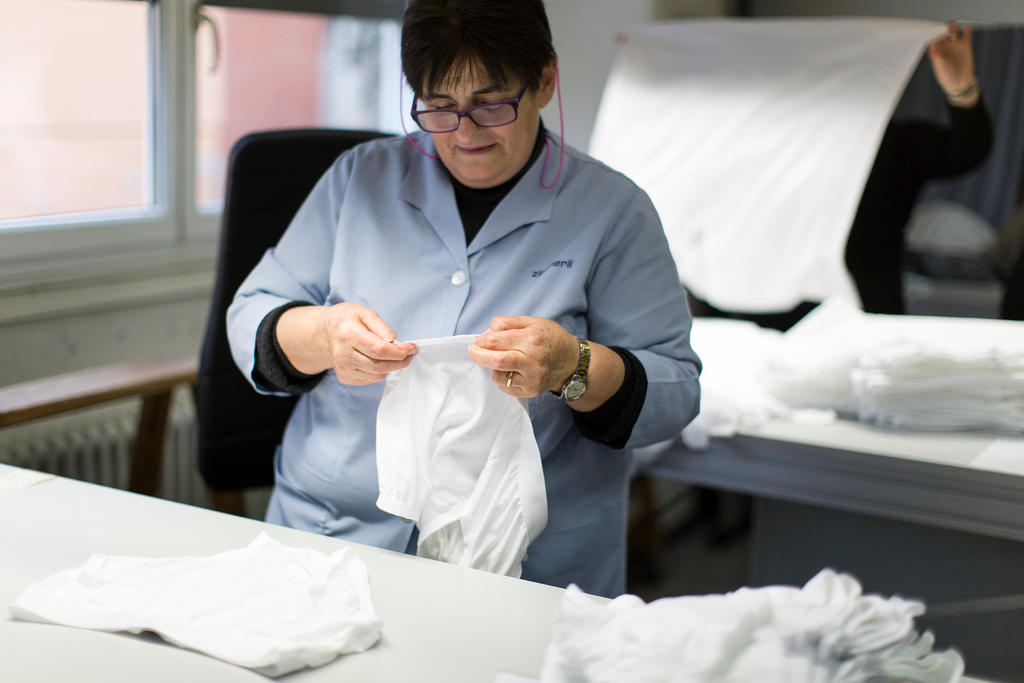Can ‘Old Age Security 2020’ guarantee pensions?

Faced with an aging population, reduced economic growth and low interest rates, the government and a parliamentary majority are calling for a sweeping reform of the old age social security system to ensure that pensions can still be paid for in years to come.
Here are the basic elements of the package “Old Age Security 2020”, which will go to a nationwide vote on September 24.
It is undoubtedly one of the most important reform projects to be put to a nationwide vote in many years. Especially because it concerns the whole population: almost all residents – Swiss or foreigners, young or old, working or not, rich or poor – have a right to old age security benefits.
But also because of the huge amounts of money involved: assets of CHF800 billion ($825 billion) are deposited in employee pension funds alone.
The goal of the reform is to guarantee funding for the social programmes – and thus pension incomes – on into the future, despite heavy pressure in the coming decades.
The main cause of such pressure is unfavourable demographic development – from an insurer’s point of view. While half a century ago the average life expectancy was 74 years for women and 68 for men, it has since increased to 84 and 80 respectively.
What is also unfavourable is the proportion of working population to pensioners: half a century ago there were five people between 20 and 64 for every pensioner; today there are hardly more than three. This situation is likely to deteriorate further over the coming decades as the baby boom generation retires.

From an economic point of view, the old age security system is facing a precarious future: frequent financial crises, declining growth, and a long period of low interest rates have been putting pressure on the earnings of the insurance institutions, and thus endangering pension incomes.
But furthermore, from a social point of view, the reform aims to respond to developments in the labour market and the increasing desire for flexible forms of retirement.
Faced with these challenges, there is urgent need for change to the current old age security system based on the so-called three pillars, that was enshrined in the Swiss constitution in 1972:
| The first pillar corresponds to the state old age pension, which aims to cover living needs during retirement. This programme is funded by compulsory contributions of workers and employers, and also by the government.The second pillar is made up of employee contributory pension plans, which together with the basic old age pension are supposed to maintain a person’s standard of living after retirement.Managed by pension funds and insurance companies, these pension plans are compulsory for all employees. They are funded by contributions both from the employees and their employers.The third pillar involves saving by individuals, aimed at filling any gaps and satisfying particular retirement aspirations. Some forms of this voluntary pension planning – retirement savings accounts and home purchases – benefit from tax incentives. |
On the whole, if earnings from activity after retirement age are included, pensioners in Switzerland have an average income of just over two thirds of that of active workers. This income breaks out as follows:
Without some correctives, the first two pillars of the old age security system are likely to be in the red soon enough. According to the government’s scenario, the old age pension fund will accumulate a deficit of CHF3 billion by 2025 and CHF7 billion by 2030.
For over a decade now, all attempts at reform of state old age pensions and employee pension plans have come to grief in parliament or were turned down by the voters.
To guarantee the funding of the old age security system, there are really just three options: cut benefits, increase contributions, or raise the retirement age. The question which has been debated for years is who should bear the burden – employees, employers, government, women, pensioners or the active population?
Two votes
The reform of the pension system consists of two separate votes on September 24.
One question on the ballot sheet covers a proposed increase in Value Added Tax to help finance the old age pension scheme. This issue is subject to a mandatory nationwide vote since it entails a change in the Swiss constitution.
The second question deals with the decree on old age pensions, also known as Old Age Security 2020. Several leftwing groups and trade unions collected enough signatures to challenge the legal amendment to a nationwide ballot. Parliament had narrowly approved the reform in March.
The reform of the old age pension reform only passes if both the legal amendment and the VAT increase win majorities at the ballot box.
To try to distribute the burden evenly and gather the most support, the government has put forward a proposal for overall reform of old age security which for the first time affects both the first and the second pillar of the system. In parliament the package was approved last March, narrowly, with the support of centre and leftwing parties. These are the main points of the reform:
* Retirement age (called in future “reference age”) for women becomes the same as that for men, rising from 64 to 65 as regards eligibility both for old age pension and employee pension plan benefits. A gradual increase of three months a year is proposed beginning 2018. With this change, the state’s old age pension fund would have an extra CHF1.3 billion in it per year.
* Every insured person can choose their own retirement age anywhere between 62 and 70 (currently it is 63 and 70). For women and men the standard or reference age is 65, which means that if you retire at that age, you get the whole insured income. If you retire earlier, your pension cheque will be smaller, if you retire later, it will be bigger.
* The minimum conversion rate for assets accumulated in compulsory pension plans goes down from 6.8% to 6%, spread by decrements of 0.2 points over a period of four years. In other words, if you have accumulated CHF100,000 in your pension fund, you will get an annual income of CHF6,000 instead of 6,800 now. This reduction affects insured persons who are not yet 45 years of age on January 1 2019. There will be extra compensation measures to top up their income.
* Still in the case of employee pension plans, insured persons between 35 and 54 will see their premiums go up by 1%. The premiums for the old age pension will go up for all insured persons – and for employers – by 0.15%.
* To make up for the disadvantages, starting with the raising of the retirement age for women, new recipients of the old age pension will get a supplement of CHF70 per month from 2019 on. Currently the minimum income is CHF1,175 and the maximum is CHF2,350.
* Also slightly increased will be contributions from the federal government to the old age pension fund. The funding will be increased beginning 2018 by 0.3% of the value added tax (VAT), which now goes to the disability insurance fund. And from 2021 on pensioners will benefit from an increase of 0.3% in VAT.
Position of the main parties
Old Age Security 2020 is supported by the parties of the centre and left – Christian Democrats, Conservative Democrats, Liberal Greens, Social Democrats and Greens – who agree this is a balanced reform that will ensure incomes and strengthen the old age pension fund.
Opposing it are the parties of the right – Radicals and People’s Party – who consider the project unfair and inadequate for solving the problems of old age security. The reform is also being opposed by some smaller trade unions and left-wing groups who reject the idea of increasing the age of retirement for women and paring back benefits.
Translated from Italian by Terence MacNamee

In compliance with the JTI standards
More: SWI swissinfo.ch certified by the Journalism Trust Initiative


















You can find an overview of ongoing debates with our journalists here . Please join us!
If you want to start a conversation about a topic raised in this article or want to report factual errors, email us at english@swissinfo.ch.